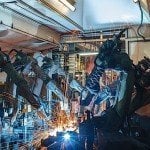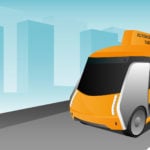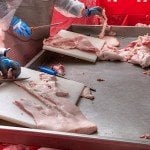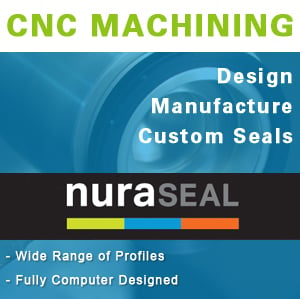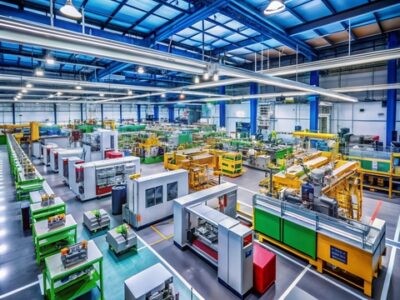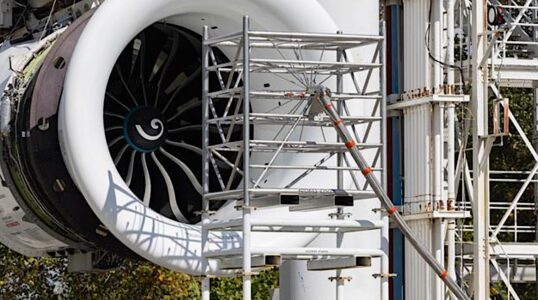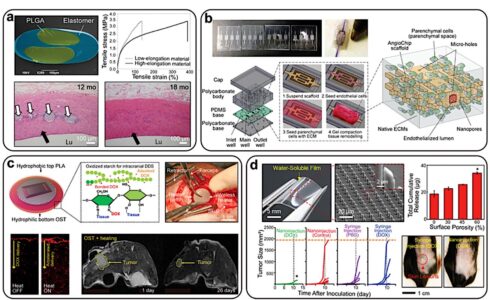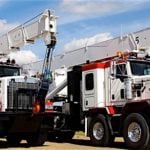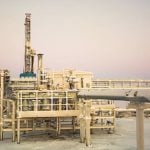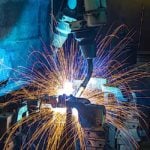From certifying jets without breaking them to predicting failures before they happen, digital twins are becoming aviation’s most critical co-pilot.
The Unbreakable Prototype
Every aerospace engineer understands the immense weight of their work: a single design flaw, a missed stress concentration, or an unanticipated material degradation can have catastrophic consequences. For decades, we’ve relied on a pyramid of physical testing—building and breaking countless coupons, components, and full-scale prototypes—to validate our designs. This process is not just astronomically expensive; it is fundamentally limited. You can only test for the failures you can imagine.
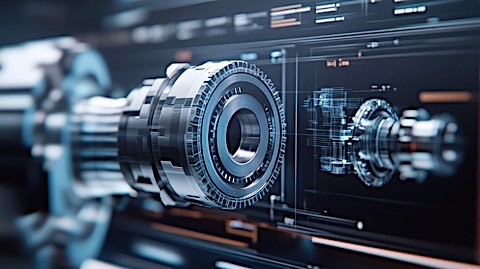
The digital twin shatters this limitation. It is more than a model; it is an indestructible, high-fidelity computational proxy of a physical asset, fed by a continuous stream of real-world operational data. For aerospace engineers, this represents a paradigm shift from statistical safety (based on past test data) to personalized, predictive integrity for every single tail number in the fleet. As NASA itself states, digital twins are a “game-changing” technology for vehicle safety and mission assurance.
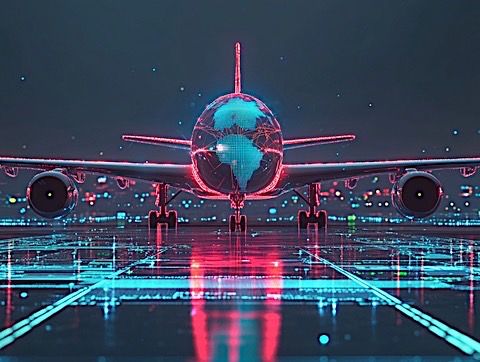
1. The Engineering Core: A Multi-Scale, Multi-Physics Nervous System
An aerospace digital twin is not a single model. It is a system of systems, mirroring the complexity of the aircraft itself.
- The Structural Twin: The backbone. This is a dynamic FEA model that evolves with the aircraft. Instead of a static model representing a “fleet average,” it ingests data from airframe strain sensors, flight cycles (pressurization counts), and G-load recordings. It knows if this specific airframe has endured more severe turbulence or harder landings than its siblings.
- The Propulsion & Systems Twin: This models the jet engines, APU, and hydraulic/electrical systems. It integrates real-time sensor data (vibration, EGT, oil debris) with physics-based models of turbine blade creep, bearing wear, and fluid dynamics.
- The Avionics & Software Twin: A virtualized copy of the aircraft’s flight control computers and network, allowing for testing software updates and diagnosing intermittent faults in a safe, simulated environment.
The power is in the fusion. A crack propagating in the structural twin can be cross-referenced with the load data that caused it, while the propulsion twin can predict how a degrading engine performance might force the airframe to operate at a less efficient, more structurally demanding point.

2. Saving Lives: The Predictive Integrity Paradigm
The most profound impact of digital twins is their potential to prevent accidents by moving beyond scheduled maintenance to Condition-Based Maintenance++.
Application: Predicting the Unpredictable – Managing Widespread Fatigue Damage
All aircraft have a certified Design Service Goal (DSG). However, individual aircraft can age very differently. A digital twin personalizes this. By tracking the actual load spectrum and flight conditions of a specific airframe, the twin can predict the initiation and growth of micro-cracks in critical locations—like lap joints or window frames—long before they reach a detectable size through traditional inspection. This moves the industry towards a future where an aircraft is retired based on its digital twin’s predicted remaining useful life, not a calendar date, fundamentally enhancing the safety of the aging fleet.
Application: Real-Time Structural Health Monitoring (SHM) in Flight
An alert flashing — not for a current fault — but for a future one. This is the concept of digital twin in structural health monitoring.
A digital twin, fed by a distributed fiber optic sensor network, can continuously compare the real-time strain state of the wing against its model. If the model predicts that the current flight profile, if continued, will push a critical component beyond its fatigue limits, it can alert the pilots or the ground crew before the damage occurs. This is the shift from detecting failure to preempting operational envelopes that lead to failure.
Source: The U.S. Air Force’s “Digital Century Series” initiative is pioneering this approach, using digital twins to rapidly design, validate, and sustain new aircraft with unprecedented levels of embedded health monitoring.
3. Saving Billions: From the Factory to the MRO Hangar
The financial impact of digital twins reverberates from the first CAD sketch to the final flight.
Application: Virtual Certification and “Right-First-Time” Manufacturing
The process of certifying a new aircraft or major modification requires thousands of hours of physical testing. By building a “gold standard” digital twin of the design and validating it against a smaller subset of physical tests, regulators like the FAA and EASA are moving toward accepting simulation data as evidence for certification. This Virtual Certification can shave years and billions of dollars off development programs. Boeing, for instance, used advanced modeling and simulation—the precursor to a full digital twin—to significantly reduce the number of physical tests required for the 777X’s composite wings.
Application: Optimizing Maintenance, Repair, and Overhaul (MRO)
Airlines lose millions of dollars per day for an Aircraft on Ground (AOG). Today, maintenance is often based on conservative, fixed intervals. A digital twin enables Personalized Maintenance Schedules.
- Engine Shop Visits: Instead of a time-based overhaul, an engine’s digital twin can accurately predict the remaining life of its high-value rotating parts. This allows operators to safely extend on-wing time, saving millions per engine per cycle.
- Faster Troubleshooting: For an intermittent fault, engineers can feed the fault code and flight data into the aircraft’s digital twin. The twin can run thousands of simulations in hours to isolate the root cause, turning a multi-day diagnostic process into a multi-hour one.
A report by McKinsey estimates that predictive maintenance driven by digital twins could reduce maintenance costs by up to 30% and unplanned downtime by up to 75% across industrial sectors, a figure directly applicable to aviation MRO.
The Engineering Challenge: Building a Credible Crystal Ball
The promise is immense, but the engineering hurdles are formidable.
- Model Fidelity and Validation: The twin is only as good as its underlying physics. Creating a model that accurately predicts non-linear, multi-axial fatigue crack growth across complex composite and metallic structures is a monumental challenge.
- Data Fidelity and Fusion: The model requires pristine, high-frequency data. This demands a new generation of robust, lightweight, and highly integrated sensors, as well as the data architecture to fuse this information seamlessly.
- The Human Factor: The ultimate challenge is trust. Engineers, regulators, and pilots must have absolute confidence in the twin’s predictions before they can act on them to override a traditional, proven schedule. Building this trust requires transparent models and a flawless track record.
Conclusion: The Indispensable Co-Pilot
The digital twin is not a replacement for the aerospace engineer’s judgment; it is that judgment’s ultimate amplifier. It provides a window into the invisible stresses and silent degradations that govern an aircraft’s life.
By transforming airframes from static, fleet-averaged designs into dynamic, individual digital entities, we are entering an era where safety is not just assured by the tests we passed yesterday, but is actively and continuously engineered for every minute of every flight tomorrow. The digital twin is, quite simply, becoming the most indispensable piece of safety equipment on the aircraft—one that never sleeps, never gets complacent, and is dedicated to ensuring that every takeoff ends with a safe landing.
Sources Cited
- NASA.. “Why the World and Nasa Need Digital Twins.” NASA Armstrong Flight Research Center. https://www.nasa.gov/centers/armstrong/features/digital-twin-to-advance-aircraft-safety.html
- Air Force Research Laboratory (AFRL). (2020). “Digital Century Series ushers in new era for aircraft acquisition.” AFRL News.
- Boeing. (2020). “777X Testing Update: Building the Future of Air Travel.” Boeing Features.
- McKinsey & Company. (2022). “Digital twins and Industry 4.0.” McKinsey Operations.

